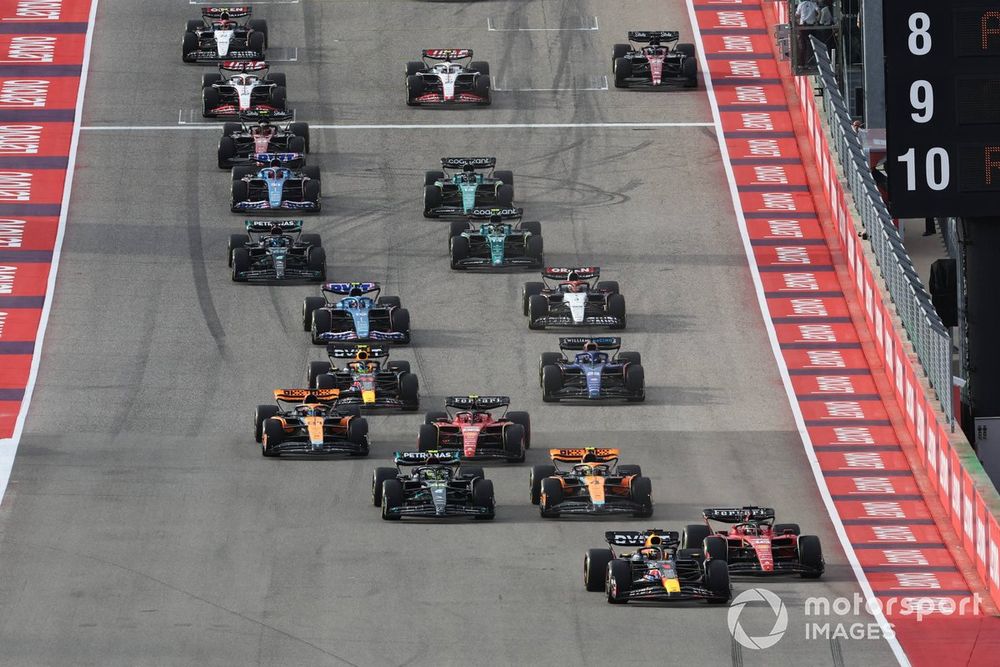The clock is ticking as the first sprint of 2024 is in China on 19-21 April, to be followed by events at the Miami, Austrian, US, Qatar and Brazilian GPs.
While sprints have ramped up interest on Fridays, the fact that the FIA and F1 are still tinkering with the format is an indication that they do not have unanimous support from fans or drivers.
Various options for 2024 have been discussed in recent months in the sporting advisory committee, the forum where rule changes are debated and honed, and the version which was approved in Monday’s F1 Commission meeting in London sees a shuffling of Friday and Saturday activity.
It means the end of the standalone status that Saturday had last year when the shootout was followed by the sprint, and race qualifying was on Friday.
Other scenarios were also considered for 2024, including one that had FP1 on Friday followed immediately by the sprint with a grid formed by a reversed top 10 championship order, and then a Saturday with FP2 followed by race qualifying.
Another had a shootout with the top 10 qualifiers then reversed on the sprint grid. To encourage drivers to make a proper effort, rather than deliberately try to end up in the lower reaches of the top 10, there was even talk of offering extra points in qualifying.
Max Verstappen, Red Bull Racing RB19, Charles Leclerc, Ferrari SF-23, Lando Norris, McLaren MCL60, Lewis Hamilton, Mercedes F1 W14, Carlos Sainz, Ferrari SF-23, Oscar Piastri, McLaren MCL60, the rest of the field at the start of the Sprint race
Photo by: Steve Etherington / Motorsport Images
There was also a debate about the entire grid being reversed, but that became moot when – perhaps wisely given the potential push-back from fans – the whole idea was shelved.
The driving force behind the change to the chosen format is parc ferme and an ongoing concern that last year drivers and teams only had FP1 to hone a set-up, which was then locked in for qualifying, the sprint day, and the race itself.
A team could only make major changes by dropping out of parc ferme, obliging the driver to start from the pitlane.
The format also played a role in the disqualifications of Lewis Hamilton and Charles Leclerc at the US GP for illegal plank wear, potentially due to the schedule not allowing for changes or enough time to try full fuel loads in FP1.
Few details of the new version emerged in Monday’s F1 Commission statement, and that’s because they still have to be…
Click Here to Read the Full Original Article at Autosport.com – Formula 1 – Stories…

